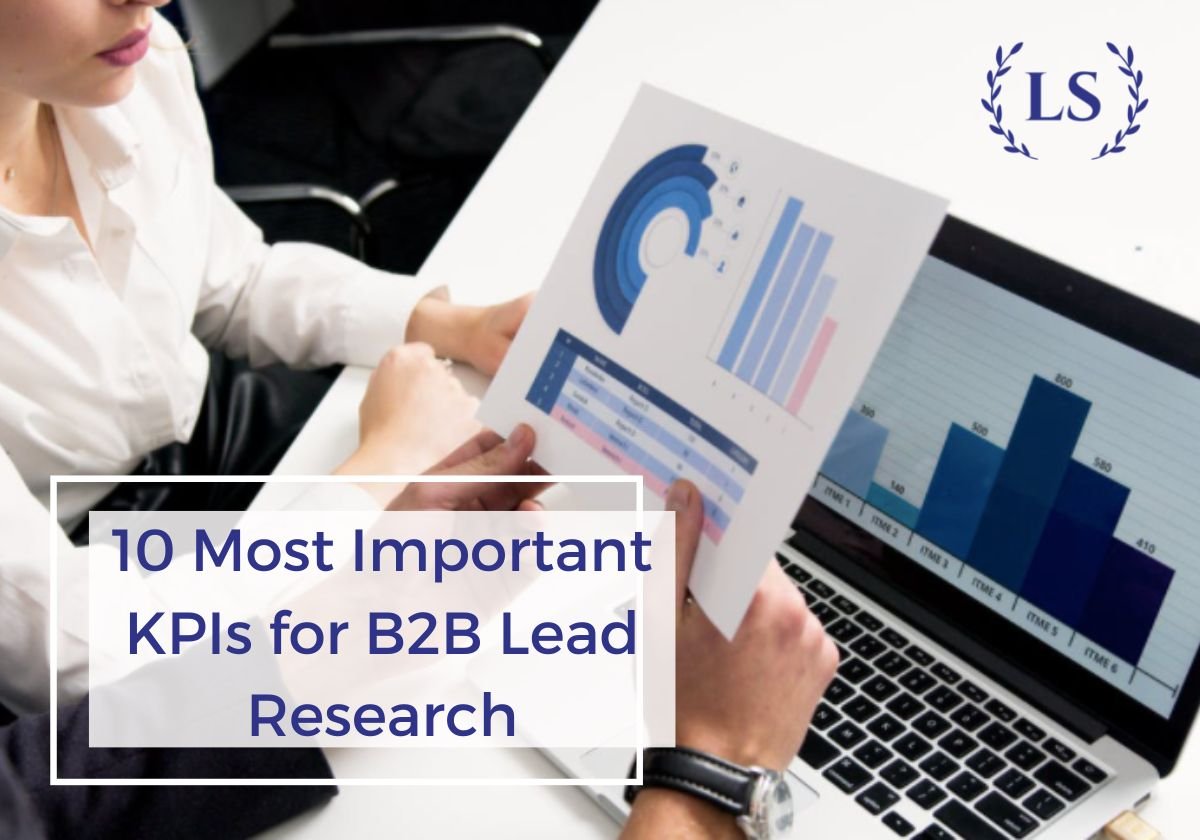10 Most Important KPIs for B2B Lead Research

B2B Lead Research and Lead Generation are vital for growing your sales. But without key metrics in place to measure your performance, you could be making a wild, stab in the dark. This is true regardless of whether your lead generation is in-house, or whether you outsource research to a lead research provider.
Here, then, are the 10 most important Key Performance Indicators you should consider ensuring your efforts in B2B lead research and lead generation are maximizing value for your business.
1. Revenue and Return on Investment (ROI)
Cash is king. When all is said and done, sustaining and growing your business requires revenue.
Poor or negative ROI indicates that your b2b lead research is adding little value to the business, or is consuming your precious capital.
Revenue and ROI are broad metrics. Diagnosing the specific causes of low revenue and ROI is a task with which the remaining KPIs will assist.
2. Organic Traffic
This refers to the traffic your website receives through natural searches or referrals.
Organic Traffic can produce leads that are especially valuable. Most of these visitors will have landed on your site through a deliberate search for the kinds of services you offer – and yet you haven’t paid a penny in advertising to acquire them.
The result: high quality for minimal cost.
Low organic traffic probably means that you need to revamp your search engine optimization to ensure that prospective leads can discover your site.
3. Conversion Rates
A Conversion Rate means the proportion of prospects or visitors who follow through to a particular result. Typically, this refers to the number of leads you convert to sales.
Important too, however, is the proportion of prospects whom you convert to leads. A simple example is the number of visitors to your website whose email addresses you can capture for your email leads list.
A poor Conversion Rate means that too many visitors are ignoring the information on your site or in your marketing campaign. This suggests that your lead research is failing to identify the top priorities for your potential clients.
4. Engagement Rate
An Engagement Rate measures the level of interaction with the content that you provide. For instance, with your website or social media posts, it can refer to the number of likes, shares, and comments relative to the total number of visitors.
The Engagement Rate is closely related to measuring the Number of Sessions – the tally of occasions on which visitors land on your site. Lots of new sessions mean plenty of new visitors; a high number of multiple sessions means previous visitors keep coming back for more. Both of these numbers should be as high as possible.
In contrast, you want your Bounce Rate to be low. This is the rate at which visitors are leaving your website without having clicked through to other pages.
A high bounce rate typically means one of two things: either your content is unappealing to your prospective clients, or the website is slow to load or difficult to navigate.
Finally, you should monitor your Email Marketing Performance. Important here are metrics such as:
– Number of openings
– Click-through rate
– Forwarding and Sharing
Keeping an eye on these helps you to judge the impact of your email marketing strategy on the prospects in your email leads list.
5. Total Leads
Total Leads are another, very basic metric. After all, if you aren’t generating the leads, there is little more for you to measure.
Ideally, you want to divide your leads into Marketing Qualified Leads (MQLs) and Sales Qualified Leads (SQLs). MQLs are those leads suitable for exposure to further marketing efforts – for example, those you have signed up in your email leads list. Should those efforts prove successful, the MQLs can graduate to become SQLs. These leads are ready for an active sales discussion or consultation.
This approach helps you to identify the effectiveness of different stages in the sales journey.
6. Lead Quality
Lead Quality is a little more refined than counting the number of MQLs and SQLs. Lead Quality refers to the likelihood of a particular lead being converted to a sale.
Poor quality leads indicate that your lead research needs improvement, as your strategy isn’t attracting the most potentially profitable prospects. One option here is to outsource research to a lead research provider.
Qualifying your leads will also help you to refine your marketing efforts once you have generated the lead, improving the response rates of particular campaigns.
Hand in hand with Lead Quality is the number of New Meetings and Contacts. The more emails, conference calls and meetings the sales team can book with your leads, the more likely it is that you will convert those leads to sales.
Don’t forget also the importance of Time to Close. The shorter the time between lead generation and closing a sale, the more eager is the client for your product or service.
7. Lead Value
Lead Value is simple: total sales divided by total leads. The result can then be compared with other metrics such as Cost Per Lead to see if you are over or under-spending on marketing to particular prospects.
8. Cost Per Lead
Again, this one is straightforward: the amount you are spending on generating each new lead.
Measuring the Cost Per Lead can help you to keep a lid on your paid advertising costs, which can form a large chunk of your overall marketing expense.
9. Customer Acquisition Cost
This is the total cost of marketing to acquire each new customer. Needless to say, ensuring that the Customer Acquisition Cost is as low as possible will keep you on top of your total marketing budget.
If Customer Acquisition Cost is high, your lead research has probably failed to identify the marketing campaigns that can deliver the highest quality leads.
10. Customer Lifetime Value
Customer Lifetime Value is a broad, but important metric: the total amount of revenue you can expect a client to deliver during your entire B2B relationship.
Once you know this, you are in a better position to make strategic decisions regarding the size and direction of your marketing budget. Continuous, high revenues from particular marketing streams can warrant longer term investment in those channels.
Remember also that maximizing the Customer’s Lifetime Value is the ultimate goal for all of your endeavors in B2B Lead Research and Lead Generation. Strong relationships with satisfied customers are the key ingredient for a thriving B2B enterprise.
Contact us by email at vitalii@ld-solution.com or by contact form Contact us







